How To Stop Hooking The Golf Ball
Want to know how to stop hooking the golf ball? In this video and article, Golf Monthly Top 50 Coach Trey Niven shares two simple steps to get you back on track
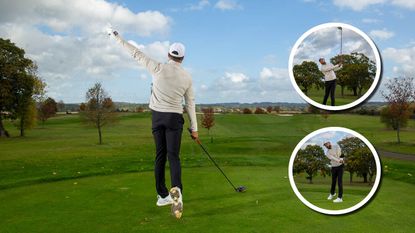

It can be frustrating when, despite your best efforts, you can't work out how to stop hooking the golf ball. This fault is something even the world’s best golfers struggle with from time to time, but there is a simple fix.
In the video and article below, PGA pro and Golf Monthly Top 50 Coach Trey Niven explains how this destructive shot happens and shares a couple of simple steps that you can follow to banish the hook for good...
What Is Causing My Hook?
It's more common for golfers to struggle with cutting across the ball and hitting a slice, but a hook is arguably more dangerous. For right-handers, a hook occurs when the clubface points well left of the club path at impact. The start line is mostly dictated by the club, so the wider this face-to-path relationship is, the more the ball is going to curve in the air.
The irony is that players who hook the ball tend to aim further right, which only increases this gap and makes matters worse. Below, I outline some of the main problems I see amateur golfers face when the dreaded hook sets in.
Step 1: The Grip
The majority of players who hook the ball have a strong golf grip, with their hands rotated away from the target (to the right for right-handers). In simple terms, when the club is released under motion and the hands return to neutral, the clubface points left.
To adopt a neutral golf grip, put the lead hand more on top of the club, so the 'V' created between your thumb and index finger points roughly towards your trail shoulder. Then slot the other hand on top so it feels comfortable. Give both hands a little squeeze together to develop an understanding for how this should feel. You should see between one and two knuckles on the lead hand when looking down.

A strong grip (left) is a common hook cause. A neutral hold (right) will help straighten out your flight
Step 2: The Takeaway
The next fault occurs in the golf swing takeaway. Lots of beginners hood the face, and whip the club away on the inside. This combination causes the clubface to shut, meaning you need to compensate elsewhere in the swing to square it back up. This ultimately sacrifices consistency and could be the reason you are hooking the golf ball.
Get the Golf Monthly Newsletter
Subscribe to the Golf Monthly newsletter to stay up to date with all the latest tour news, equipment news, reviews, head-to-heads and buyer’s guides from our team of experienced experts.
Try out this practice drill. Get into your driver address position, aiming towards your target with a neutral grip, and then put your trail hand out as if you're shaking hands with someone standing to your right. Begin your swing, and bring your lead hand into position until it meets your trail hand. Through doing this, you will notice the clubface is much more square.
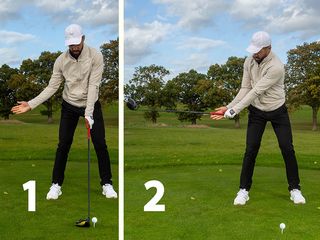
This drill will help you practice a much more effective takeaway in the golf swing
Imagine the swing like a chain, if you make a change to something at the start of the chain, it will impact on everything else along the way. Dedicate some time to practising these two steps and your ball flight will improve.
The Fix: Tommy Fleetwood Drill
So many golfers stop rotating through impact and that inevitably leads to hooks. The body stalls, and the hands flip over quickly, making it really difficult to control the clubface, especially when swinging at speed with the driver.
A great way to improve your pivot is to channel your inner Tommy Fleetwood. Start by taking a full backswing, and focus on really trying hard to hold off the follow-through, sort of as if you're hitting a low punch shot with an iron. Check out the video above to see how I do it.
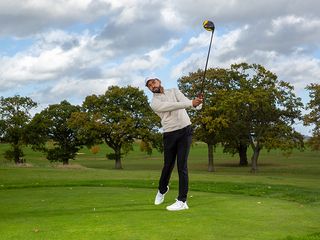
The Tommy Fleetwood drill will improve your pivot and help increase your control of the clubface
Build it up slowly, starting with some slower swings to get a feel for the drill before increasing the pace when you feel more comfortable. With practice, this improved pivot will allow for better clubface control and have you hitting straighter drives more consistently.

After enjoying a successful men’s amateur career, during which time he played for Shropshire and Herefordshire’s first team, Trey turned professional in 2018, and he now teaches from a number of locations in the Midlands. He enjoys coaching players of all abilities, from county players, to club golfers and beginners.

Location: Shrewsbury Golf Club, 3 Hammers Golf Academy
After enjoying a successful men’s amateur career, during which time he played for Shropshire and Herefordshire’s first team, Trey turned professional in 2018, and he now teaches from a number of locations in the Midlands. He enjoys coaching players of all abilities, from county players, to club golfers and beginners.
Significant influences:
Trey’s teaching has been influenced by Mike Granato and Shaun Webb, two coaches who have worked with a whole host of Tour professionals. The way that they are able to explain the swing and use data to help the average golfer is something that Trey brings to his own teaching.
Whilst Trey is enthusiastic about every aspect of the game, he’s particularly interested in what happens at impact to cause a certain ball flight. This may not always be a perfect looking golf swing, but one that that functions well and is repeatable. He’s always watching and learning from the best players in the world, identifying trends and looking at how that might help the players he teaches.
Teaching philosophy:
Trey is a strong believer in making your bad shot better. "Golf," he says, "is a game of misses as opposed to how good is your good shot." He’s also keen to see his students think for themselves and take ownership, and believes players who are successful own their own golf swing and make it work.
Goals:
One of Trey’s goals is to increase participation in the game and to make the game more diverse. Trey runs initiatives as part of the Black British Golfers to showcase talent from and increase participation from unrepresented groups.
-
 15-Year-Old Miles Russell Rockets Up The World Rankings After Historic Performance On Korn Ferry Tour
15-Year-Old Miles Russell Rockets Up The World Rankings After Historic Performance On Korn Ferry TourThe teenage sensation made history last week by becoming the youngest player to make the cut at a Korn Ferry Tour event
By Joel Kulasingham Published
-
 Rory McIlroy Set To Make Shock Return To PGA Tour Policy Board - Report
Rory McIlroy Set To Make Shock Return To PGA Tour Policy Board - ReportThe World No.2 could be returning to the PGA Tour policy board as a player director once again after stepping down from the role last November
By Joel Kulasingham Published
-
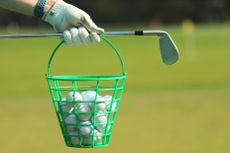 Golfing New Year’s Resolutions... How To Commit Both On And Off The Course!
Golfing New Year’s Resolutions... How To Commit Both On And Off The Course!Golfing New Year's resolutions advice from our mental game coach Gareth Shaw
By Gareth Shaw Published
-
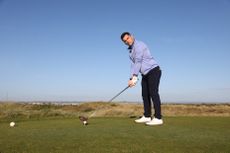 Confidence In Golf: Why Does It Go And How Can You Rediscover It?
Confidence In Golf: Why Does It Go And How Can You Rediscover It?Confidence tips for golf from mental skills coach, Gareth Shaw
By Gareth Shaw Published
-
 How To Spin The Golf Ball
How To Spin The Golf BallTop 50 Coach Trey Niven discusses how to spin the golf ball and shares a handy drill
By Trey Niven Published
-
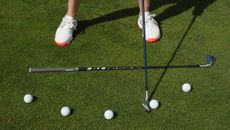 Why Do I Pull Iron Shots? Causes And Cures
Why Do I Pull Iron Shots? Causes And CuresIn this article and video, Katie Dawkins looks at why golfers pull iron shots and offers some helpful tips
By Katie Dawkins Published
-
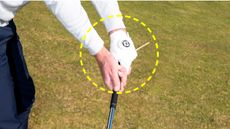 Inside Takeaway Golf Fix
Inside Takeaway Golf FixStart your swing the right way with these inside takeaway golf tips from Golf Monthly Top 50 Coach Andrew Jones
By Andrew Jones Last updated
-
 Best Golf Exercises: 10 Moves For Every Golfer To Try
Best Golf Exercises: 10 Moves For Every Golfer To TryBelow, we look at the best golf exercises as demonstrated by golf strength and conditioning coach Jamie Greaves
By Jamie Greaves Last updated
-
 Golf Strength Training: Upper And Lower Body Exercises
Golf Strength Training: Upper And Lower Body ExercisesIn these golf strength training videos, fitness guru Jamie Greaves demonstrates some fantastic exercises to help boost muscle mass, strength and power
By Jamie Greaves Last updated
-
 How To Cure The Putting Yips
How To Cure The Putting YipsLearn how to cure the putting yips with these simple and practical pointers from PGA Professional Gareth Shaw
By Gareth Shaw Last updated